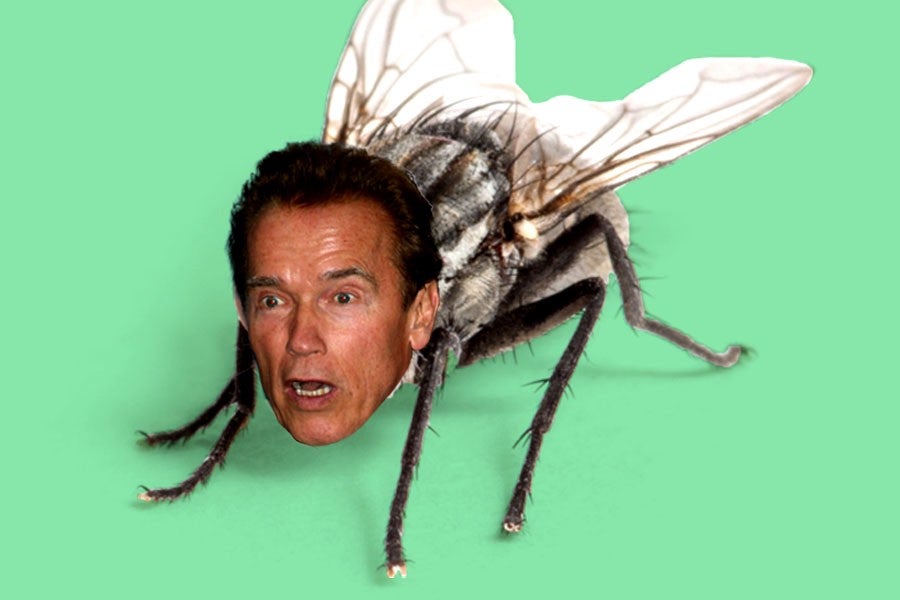The dubbing of a newly discovered fly is usually the sort of news that, uh, flies under the radar. But every now and again, you get yourself a fly with a name so perfect, you can’t help but pay attention. Case in point: Megapropodiphora arnoldi, the name recently given to a fly that, despite being the smallest in the world, has been named after one of the planet’s biggest men — Arnold Schwarzenegger.
“As scientists, we usually name newly discovered species after a fellow scientist, the person who discovered the species or based on its attributes,” says entomologist Brian Brown of the Natural History Museum of Los Angeles County. “But this one had such big front arms that I thought it deserved to have a special name.”
And besides Big Poppa Pump, who’s worthy of having their biceps called out more than Ah-nuld?
Despite sounding like a slight — not many people would take having a fly being named after them as a compliment — Brown insists that it was done as an homage. “When I was a kid, I read his autobiography — it gave me hope that I wouldn’t be a scrawny teenager, and it got me interested in weight training. Someone with the sort of grace that Arnold Schwarzenegger has understands that I named the fly after him as a sign of respect.”
He’s right; the man himself took it well:
Thanks for the great honor, Dr. Brown. Now I’m committed to making sure we get your thighs as muscular as the fly’s! https://t.co/n7QWMxWUa0
— Arnold (@Schwarzenegger) January 24, 2018
Aside from the fly’s signature buff arms, Brown explains that another reason he named it after Arnold is because it’s a parasitoid. “A parasitoid is an organism that feeds on another organism, eventually killing its host,” he says. “These flies have sharp tail ends they can jab into another organism, then lay their eggs inside that organism, which will ultimately hatch and feed off the internal contents of the body until the host has been terminated.”
Other things that make this fly so special have to do with the shape of its body, which according to Brown, was built to protect it against being caught. “It has the sort of body form that’s defensive: Its body doesn’t have a lot of things predators [again, we see what you did there] can hold on to — it’s smooth, like a watermelon seed.”
Or like Arnie’s skin after its been doused in body oil.
As unique as this christening may seem, it’s not the first time a fly has been named after a celebrity: In 2012, Australian scientists named a fly with a golden behind — Scaptia (Plinthina) beyonceae — after Beyonce. Still, Brown doesn’t expect scientists to start naming every new species of fly after a celebrity. “What makes the naming of a fly like this so unique is that it doesn’t happen often,” Brown says. “But it gets the public interested in our field, which is something my colleagues and I agree is a good thing.”
Here’s hoping scientists soon discover a giant fly with a balding/ponytail combo and a pot belly.

